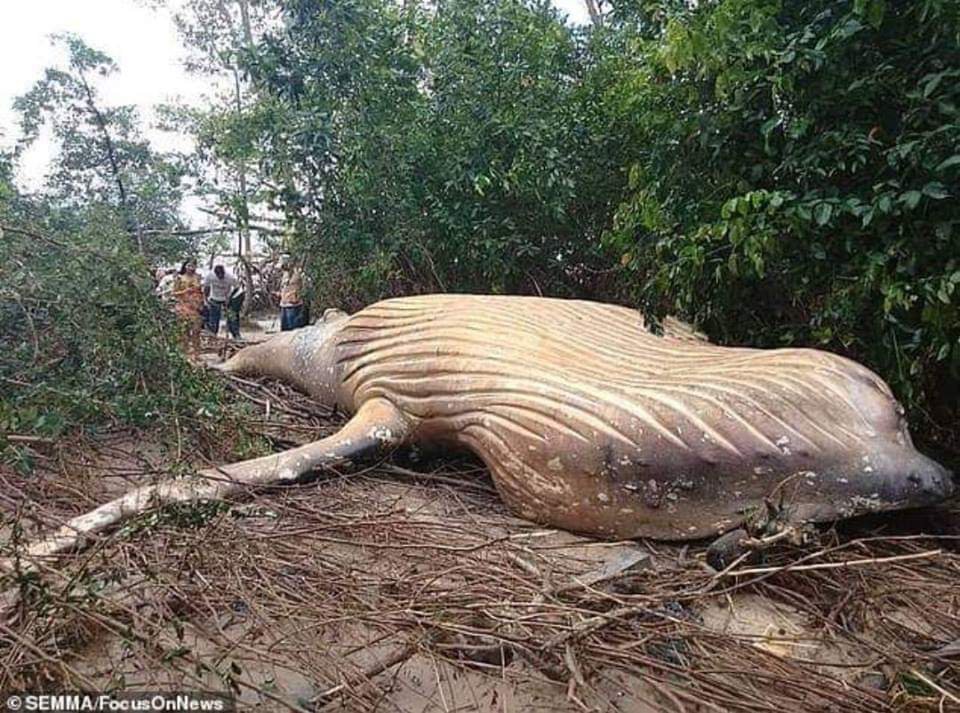
It sounds like the start of a children’s nursing rhyme or riddle. Researchers stumble upon a 26-foot-long humpbackwhale amid the twisting vines and sagging trees of Brazil’s Amazon jungle, nearly 50 feet from the shore. How did it get there?
The 10-ton mammal was found on the island of Marajo, at the mouth of the Amazon River, in late February, according to the Independent.

The Bicho D’Agua Institute, a conservation group that is studying the animal, think a large wave tossed the carcass deep into the mangrove, but it’s unclear why the whale was swimming off the coast of Brazil in the first place.

“We’re still not sure how it landed here, but we’re guessing that the creature was floating close to the shore and the tide, which has been pretty considerable over the past few days,” Renata Emin, the institute’s project leader, told the Independent.

Emrin said she was “baffled” by the whale’s presence on the north coast of Brazil in February, which she called a “very unusual occurrence.” Humpbackwhales, though common on the Bahia coast of Brazil between August and November, rarely swim north to the mouth of the Amazon, a journey requiring thousands of miles of travel inland.

It appears the humpback was a calf that was separated from its mother while migrating to Antarctica for the warmer season, Emrin told the publication.
A cause of death has not yet been determined. Researchers continue to study the whale, an effort made especially difficult by the large animal’s remote location.
Humpback population
Humpback whale populations were deteriorating for several years because they were often killed for their blubber.
But the population has rebounded in recent years under protections introduced in the 1990s. According to Fisheries and Oceans Canada, there are now about 54,000 worldwide.
While the population has increased by roughly 45 per cent, it still hasn’t reached pre-whaling numbers.
Humpbacks travel great distances every year, slowly migrating to and from the poles. Those in the Northern Hemisphere migrate this time of year to tropical waters before returning north in the summer. In the Southern Hemisphere, they migrate south during this time of year and return north during their winter, in the breeding season.
The World Wildlife Foundation explains that humpbacks can be found across the globe, including off the shores of Canada, as they migrate seasonally.